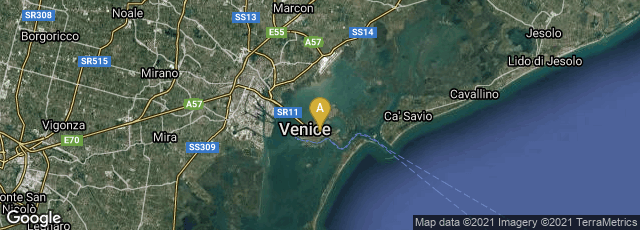

In 1476 printers Johann de Colonia and Johannes Manthen of Venice issued Aristotle's![]() De animalibus, translated from the Greek by Greek humanist Theodorus Gaza
De animalibus, translated from the Greek by Greek humanist Theodorus Gaza![]() (Greek: Θεόδωρος Γαζής, Theodoros Gazis), and edited by Ludovicus Podocatharus
(Greek: Θεόδωρος Γαζής, Theodoros Gazis), and edited by Ludovicus Podocatharus![]() , perhaps with expenses born by Podocatharus. Aristotle was the first scientist to gather empirical evidence about the biological world through observation. The printed edition, which contained his De historia animalium (descriptive zoology), De partibus animalium (animal physiology), and De generatione animalium (embryology), was the first printed compilation of works relating to biology. The Historia's "comprehensiveness and acumen made it the outstanding descriptive zoology of ancient times. . . . It outlasted the work of such later encyclopedic compilers as Pliny, and combined with Aristotle's other zoological works it became-- through the Arabic version translated into Latin by Michael Scot-- the major ingredient in Albertus Magnus' De animalibus, which dominated the field until the sixteenth century" (Dictionary of Scientific Biography). Joseph Needham (p. 39) called De generatione animalium "the first great compendium of embryology ever written"; it contained Aristotle's studies of the chick in embryo, and introduced his hypothesis that embryos were produced by the working of the male dynamic element (semen) upon the female plastic element (menstrual blood), to which the semen gave form. Book II presented Aristotle's embryological classification of animals and a discussion of the question of epigenesis versus preformation-- an antithesis that Aristotle was the first to perceive, and which was to define the subsequent history of embryology.
, perhaps with expenses born by Podocatharus. Aristotle was the first scientist to gather empirical evidence about the biological world through observation. The printed edition, which contained his De historia animalium (descriptive zoology), De partibus animalium (animal physiology), and De generatione animalium (embryology), was the first printed compilation of works relating to biology. The Historia's "comprehensiveness and acumen made it the outstanding descriptive zoology of ancient times. . . . It outlasted the work of such later encyclopedic compilers as Pliny, and combined with Aristotle's other zoological works it became-- through the Arabic version translated into Latin by Michael Scot-- the major ingredient in Albertus Magnus' De animalibus, which dominated the field until the sixteenth century" (Dictionary of Scientific Biography). Joseph Needham (p. 39) called De generatione animalium "the first great compendium of embryology ever written"; it contained Aristotle's studies of the chick in embryo, and introduced his hypothesis that embryos were produced by the working of the male dynamic element (semen) upon the female plastic element (menstrual blood), to which the semen gave form. Book II presented Aristotle's embryological classification of animals and a discussion of the question of epigenesis versus preformation-- an antithesis that Aristotle was the first to perceive, and which was to define the subsequent history of embryology.
On June 8, 2016 Bonham's in New York auctioned a remarkable copy of this work printed on vellum. Rebecca Rego Barry published an excellent account of it in TheGuardian.com on May 11, 2016![]() , from which I quote:
, from which I quote:
"The rediscovery of a 15th-century illuminated edition of Aristotle’s De animalibus (On Animals)![]() in Tennessee late last year was 'pretty incredible', said Christina Geiger, director of fine books and manuscripts at Bonhams auction house in New York. Not only is the book an 'incunable' – printed before 1501, when the ink was still wet on moveable type – but this deluxe copy was printed on vellum, or animal skin. Only one other copy [printed on vellum] exists and it belongs to the Bibliothèque Nationale in Paris....
in Tennessee late last year was 'pretty incredible', said Christina Geiger, director of fine books and manuscripts at Bonhams auction house in New York. Not only is the book an 'incunable' – printed before 1501, when the ink was still wet on moveable type – but this deluxe copy was printed on vellum, or animal skin. Only one other copy [printed on vellum] exists and it belongs to the Bibliothèque Nationale in Paris....
"An invitation from Pope Nicholas V prompted a new Latin translation of the book by Greek scholar and refugee Theodore Gaza, printed in Venice by John of Cologne and John Manthen in 1476. The auctioneers believe that Gaspare da Padova is the artist responsible for the volume’s decorative initials and borders painted in gold and various colors. A handful of special vellum copies were probably produced for sponsors. Only one was thought to have survived before this recent finding.
"Bonhams will offer the Renaissance-era rarity at auction in New York on 8 June. It is estimated to fetch $300,000 to $500,000. [The actual price realized was $941,000 including premium.]
"The book last surfaced at auction on 5 March 1891, when American publisher and book collector William Evarts Benjamin purchased it for $850. 'We don’t know if he sold it or kept it,' said Geiger. 'We checked all of his catalogues over at the Grolier Club and we checked his archives at Columbia and couldn’t find a reference to it. But he’s listed as the buyer in 1891, and then it just fell off the map completely.'
“ 'Part of what’s interesting for me is that if that sale in 1891 had been just a few years later, [De animalibus] probably would have been bought by Huntington or Morgan or one of the great collectors of incunables in America, but it was just a little bit too early.'
"Geiger’s research turned up a long line of distinguished ownership before that 1891 sale, beginning with Luigi Serra, fourth Duke of Cassano (1747-1825). It then moved through the hands of bookseller James Edwards to Sir Mark Masterman-Sykes, the famed nineteenth-century book collector, who had it re-bound in red morocco gilt. His coat of arms still embellishes the binding.
"It was while De animalibus was in Sir Mark’s collection that the well-known English bibliophile TF Dibdin had the opportunity to see it. He recorded his impression in his Bibliographical Decameron![]() (1817): 'Yet how can I omit to mention, with the distinction which it merits, the very beautiful, if not matchless, copy of Theodore Gaza’s Latin version of Aristotle upon Animals, of the date of 1476, in folio, UPON VELLUM, from the press of John of Cologne – of which my friend Sir MM Sykes is the fortunate possessor?! If my memory be not treacherous, this is the most exquisite specimen of an early Venetian vellum book that I have ever seen.'
(1817): 'Yet how can I omit to mention, with the distinction which it merits, the very beautiful, if not matchless, copy of Theodore Gaza’s Latin version of Aristotle upon Animals, of the date of 1476, in folio, UPON VELLUM, from the press of John of Cologne – of which my friend Sir MM Sykes is the fortunate possessor?! If my memory be not treacherous, this is the most exquisite specimen of an early Venetian vellum book that I have ever seen.'
"Geiger said: 'This is that very copy, almost exactly 200 years later.You could probably go back and find out when he was at Sykes’ home. I haven’t gone back that deep, but [Dibdin’s] book was published in 1817, so here we are in 2016 and [De animalibus] is in the same condition. That’s the other thing. For a book that fell through the cracks, it didn’t get run over. It’s just in beautiful condition.'
"Other 19th-century owners of the volume include English publisher and bookseller William Pickering, Sir John Hayford Thorold, bookseller and collector Bernard Quaritch, and American railway tycoon and banker Brayton Ives."
J. Norman (ed.), HistoryofMedicine.com Nos. 274; 275; 462![]() . Needham, History of Embryology 37-43. Hook & Norman, The Haskell F. Norman Library of Science and Medicine (1991) No. 69. ISTC No.: ia00973000
. Needham, History of Embryology 37-43. Hook & Norman, The Haskell F. Norman Library of Science and Medicine (1991) No. 69. ISTC No.: ia00973000![]() . In November 2013 a digital facsimile of a copy on paper was available from the Bayerische Staatsbibliothek at this link
. In November 2013 a digital facsimile of a copy on paper was available from the Bayerische Staatsbibliothek at this link![]() .
.
(This entry was last revised on 05-13-2016.)